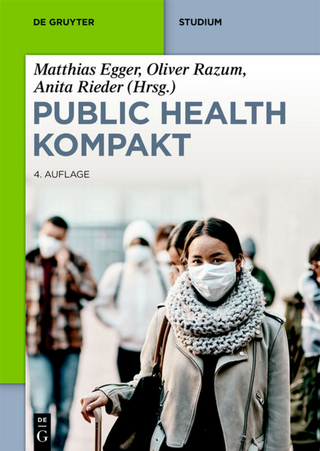
Comparing Clinical Measurement Methods
John Wiley & Sons Inc (Verlag)
978-0-470-69423-7 (ISBN)
- Lieferbar (Termin unbekannt)
- Versandkostenfrei innerhalb Deutschlands
- Auch auf Rechnung
- Verfügbarkeit in der Filiale vor Ort prüfen
- Artikel merken
This book provides a practical guide to analysis of simple and complex method comparison data, using Stata, SAS and R. It takes the classical Limits of Agreement as a starting point, and presents it in a proper statistical framework. The model serves as a reference for reporting sources of variation and for providing conversion equations and plots between methods for practical use, including prediction uncertainty.
Presents a modeling framework for analysis of data and reporting of results from comparing measurements from different clinical centers and/or different methods.
Provides the practical tools for analyzing method comparison studies along with guidance on what to report and how to plan comparison studies and advice on appropriate software.
Illustrated throughout with computer examples in R.
Supported by a supplementary website hosting an R-package that performs the major part of the analyses needed in the area.
Examples in SAS and Stata for the most common situations are also provided.
Written by an acknowledged expert on the subject, with a long standing experience as a biostatistician in a clinical environment and a track record of delivering training on the subject.
Biostatisticians, clinicians, medical researchers and practitioners involved in research and analysis of measurement methods and laboratory investigations will benefit from this book. Students of statistics, biostatistics, and the chemical sciences will also find this book useful.
Bendix Carstensen, Senior Statistician at Steno Diabetes Center, Denmark; also of Department of Biostatistics, Copenhagen, Denmark Bendix Carstensen has been working as a biostatistician in research institutions since 1983. During the last 10 years he has taught courses for medical PhD-students at the Department of Biostatistics at the University of Copenhagen and has been involved in the delivery of overseas courses in epidemiology and the comparison of measurement methods.
Acknowledgments. 1 Introduction.
2 Method comparisons.
2.1 One measurement by each method.
2.1.1 Prediction of one method from another.
2.1.2 Why not use the correlation?
2.1.3 A new method and a reference method.
2.2 Replicate measurements by each method.
2.2.1 Exchangeable replicates: fat data.
2.2.2 Linked replicates: oximetry data.
2.2.3 Why not use the averages of the replicates?
2.3 More than two methods.
2.4 Terminology and notation.
2.5 What it is all about.
3 How to…
3.1 …use this chapter.
3.2 Two methods.
3.2.1 Single measurements.
3.2.2 Comparing with a gold standard.
3.2.3 Replicate measurements.
3.3 More than two methods.
3.3.1 Single measurements.
3.3.2 Replicate measurements.
4 Two methods with a single measurement on each.
4.1 Model for limits of agreement.
4.1.1 Prediction between methods.
4.1.2 The correlation of the difference and the average.
4.2 Non-constant difference between methods.
4.3 A worked example.
4.4 What really goes on.
4.4.1 Scaling.
4.4.2 Independence.
4.4.3 Actual behavior.
4.5 Other regression methods for non-constant bias.
4.5.1 Why ordinary regression fails.
4.5.2 Deming regression.
4.6 Comparison with a gold standard.
4.7 Non-constant variance.
4.7.1 Regression approach.
4.7.2 A worked example.
4.8 Transformations.
4.8.1 Log transformation.
4.9 Summary.
5 Replicate measurements.
5.1 Pairing of replicate measurements.
5.1.1 Exchangeable replicates.
5.1.2 Linked replicates.
5.2 Plotting replicate measurements.
5.3 Models for replicate measurements.
5.3.1 Exchangeable replicates.
5.3.2 Linked replicates.
5.4 Interpretation of the random effects.
5.5 Estimation.
5.6 Getting it wrong and getting it almost right.
5.6.1 Averaging over replicates.
5.6.2 Replicates as items.
5.7 Summary.
6 Several methods of measurement.
6.1 Model.
6.2 Replicate measurements.
6.3 Single measurement by each method.
7 A general model for method comparisons.
7.1 Scaling.
7.2 Interpretation of the random effects.
7.3 Parametrization of the mean.
7.4 Prediction limits.
7.4.1 Mean of replicates.
7.4.2 Plotting predictions between methods.
7.4.3 Reporting variance components.
7.4.4 Comparison with a gold standard.
7.5 Estimation.
7.5.1 Alternating regressions.
7.5.2 Estimation using BUGS.
7.5.3 A worked example.
7.6 Models with non-constant variance.
7.6.1 Linear dependence of residual standard error.
7.7 Summary.
8 Transformation of measurements.
8.1 Log transformation.
8.2 Transformations of percentages.
8.2.1 A worked example.
8.2.2 Implementation in MethComp.
8.3 Other transformations.
8.4 Several methods.
8.5 Variance components.
8.6 Summary.
9 Repeatability, reproducibility and coefficient of variation.
9.1 Repeatability.
9.2 Reproducibility.
9.3 Coefficient of variation.
9.3.1 Symmetric interval on the log scale.
9.3.2 Computing the CV correctly.
9.3.3 Transformations.
10 Measures of association and agreement.
10.1 Individual bioequivalence criterion.
10.2 Agreement index.
10.3 Relative variance index.
10.4 Total deviation index.
10.5 Correlation measures.
10.5.1 Correlation coefficient.
10.5.2 Intraclass correlation coefficient.
10.5.3 Concordance correlation coefficient.
10.6 Summary.
11 Design of method comparison studies.
11.1 Sample size.
11.1.1 Mean parameters.
11.1.2 Variance parameters.
11.2 Repeated measures designs.
11.3 Summary.
12 Examples using standard software.
12.1 SAS.
12.1.1 Exchangeable replicates.
12.1.2 Linked replicates.
12.2 Stata.
12.2.1 Exchangeable replicates.
12.2.2 Linked replicates.
12.3 R.
12.3.1 Exchangeable replicates.
12.3.2 Linked replicates.
13 The MethComp package for R.
13.1 Data structures.
13.2 Function overview.
13.2.1 Graphical functions.
13.2.2 Data manipulating functions.
13.2.3 Analysis functions.
13.2.4 Reporting functions.
References.
Index.
| Erscheint lt. Verlag | 11.10.2010 |
|---|---|
| Reihe/Serie | Statistics in Practice |
| Verlagsort | New York |
| Sprache | englisch |
| Maße | 155 x 236 mm |
| Gewicht | 390 g |
| Themenwelt | Mathematik / Informatik ► Mathematik ► Wahrscheinlichkeit / Kombinatorik |
| Studium ► Querschnittsbereiche ► Epidemiologie / Med. Biometrie | |
| ISBN-10 | 0-470-69423-8 / 0470694238 |
| ISBN-13 | 978-0-470-69423-7 / 9780470694237 |
| Zustand | Neuware |
| Informationen gemäß Produktsicherheitsverordnung (GPSR) | |
| Haben Sie eine Frage zum Produkt? |
aus dem Bereich


